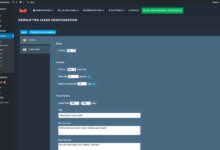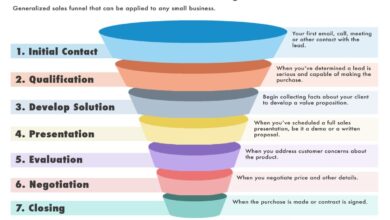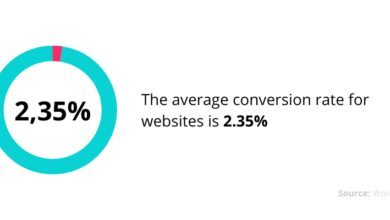Warm Leads: 7 Proven Strategies to Skyrocket Your Conversions
Ever wonder why some sales efforts hit the jackpot while others flop? The secret often lies in warm leads—prospects already interested in what you offer. These aren’t cold calls in the dark; they’re golden opportunities glowing with potential.
What Are Warm Leads and Why They Matter

Understanding warm leads is the first step toward mastering modern sales and marketing. Unlike cold leads, who have little to no prior interaction with your brand, warm leads have shown interest—whether by downloading a guide, attending a webinar, or engaging with your content. This prior engagement makes them far more receptive to your message.
Defining Warm Leads vs. Cold and Hot Leads
The lead spectrum ranges from cold to hot, with warm leads sitting comfortably in the middle. Cold leads are strangers to your brand—no interaction, no awareness. Hot leads are ready to buy now, often asking for pricing or demos. Warm leads? They’re the ones who’ve raised their hands, signaling interest but not yet ready to commit.
- Cold Leads: No prior engagement; require significant nurturing.
- Warm Leads: Have interacted with your brand; open to communication.
- Hot Leads: Actively seeking to purchase; sales-ready.
Why Warm Leads Convert Faster
Warm leads have already taken the first step—showing interest. This reduces the psychological distance between awareness and purchase. According to HubSpot, warm leads are 20% more likely to convert than cold leads. Their familiarity with your brand lowers resistance, shortens the sales cycle, and increases average deal size.
“People don’t buy from companies. They buy from people they know, like, and trust.” – Jay Abraham
How Warm Leads Are Generated
Warm leads don’t appear out of thin air. They’re the result of strategic, value-driven interactions. The key is offering something useful in exchange for attention—content, tools, or experiences that solve real problems.
Content Marketing: The Foundation of Warm Lead Generation
High-quality content is the engine behind warm lead generation. Blogs, ebooks, whitepapers, and videos attract prospects actively searching for solutions. When someone downloads your ‘Ultimate Guide to Email Marketing,’ they’re not just consuming content—they’re signaling intent.
For example, a SaaS company offering a free CRM checklist can capture leads who are evaluating tools. These individuals are already in research mode, making them prime warm lead candidates. According to Content Marketing Institute, content-driven lead generation costs 62% less than traditional outbound methods while generating three times as many leads.
Webinars and Live Events
Webinars are one of the most effective ways to generate warm leads. They offer real-time value while allowing you to interact directly with attendees. A well-executed webinar positions your brand as an authority and builds trust.
- Offer actionable insights, not just sales pitches.
- Use polls and Q&A sessions to engage participants.
- Follow up with attendees using personalized emails.
Companies like Zoom and GoToWebinar report that webinar attendees are 6x more likely to convert than other types of leads. The live interaction creates a sense of connection, making attendees more receptive to future offers.
Social Media Engagement
Social platforms aren’t just for brand awareness—they’re powerful tools for warming up leads. When users comment on your posts, share your content, or join your LinkedIn group, they’re showing interest. These micro-interactions build familiarity over time.
For instance, a fitness brand that regularly shares workout tips on Instagram can attract followers who later inquire about coaching programs. These followers aren’t cold—they’ve been nurtured through consistent value delivery. Platforms like Facebook and LinkedIn also offer lead gen forms that make it easy to capture warm leads directly from ads.
The Psychology Behind Warm Leads
Understanding human behavior is crucial when dealing with warm leads. It’s not just about what they do—it’s about why they do it. The principles of reciprocity, consistency, and social proof play a major role in turning interest into action.
The Principle of Reciprocity
When you provide value—like a free template or a helpful consultation—people feel compelled to return the favor. This psychological trigger is at the heart of warm lead conversion. A study by Dr. Robert Cialdini found that giving something of value first increases compliance rates by up to 400%.
For example, a financial advisor who offers a free retirement planning checklist creates a sense of obligation. When the advisor later follows up with a consultation offer, the lead is more likely to say yes—not just because the service is good, but because they feel they owe something in return.
Consistency and Commitment
Once someone takes a small action—like signing up for a newsletter—they’re more likely to take larger actions later. This is the consistency principle: people strive to align their behaviors with their past decisions.
By getting leads to make small commitments first (e.g., downloading a guide), you set the stage for bigger ones (e.g., purchasing a course). This is why multi-step lead magnets work so well. Each step reinforces the lead’s self-image as someone interested in your niche.
Social Proof and Trust Building
Warm leads are more likely to convert when they see others like them doing the same. Testimonials, case studies, and user-generated content serve as social proof, reducing perceived risk.
- Showcase real customer results with before-and-after metrics.
- Highlight peer endorsements in follow-up emails.
- Use trust badges and security seals on landing pages.
A Nielsen study found that 92% of consumers trust peer recommendations over advertising. When warm leads see others benefiting from your product, their confidence in taking the next step skyrockets.
Strategies to Nurture Warm Leads Effectively
Generating warm leads is only half the battle. The real magic happens in nurturing—guiding them from interest to action through consistent, value-driven communication.
Email Drip Campaigns That Convert
Email remains one of the most effective tools for nurturing warm leads. A well-crafted drip campaign delivers the right message at the right time, building trust and guiding leads down the funnel.
For example, a 5-day email sequence might include:
- Day 1: Welcome + deliver promised resource.
- Day 2: Share a success story related to the lead’s pain point.
- Day 3: Offer a free consultation or demo.
- Day 4: Address common objections with a FAQ or video.
- Day 5: Present a limited-time offer or call to action.
According to Mailchimp, segmented and targeted emails generate 30% higher open rates and 50% more click-throughs. Personalization is key—use the lead’s name, reference their download, and tailor content to their industry or role.
Personalized Follow-Ups and Outreach
Not all warm leads are ready to convert immediately. Some need a personal touch to move forward. This is where targeted outreach shines.
Sales reps can use CRM data to identify leads who’ve engaged with specific content—like watching a product demo video—and send a personalized LinkedIn message or email. For example:
“Hi Sarah, I noticed you watched our onboarding tutorial—did you find it helpful? I’d love to hear your thoughts and see if there’s anything I can clarify.”
— Personalized follow-up message
This approach feels human, not robotic. It shows you’re paying attention, which builds rapport and increases response rates.
Using Retargeting Ads to Stay Top of Mind
Even warm leads can go cold if ignored. Retargeting ads keep your brand visible across the web, reminding leads of their initial interest.
For instance, if someone downloaded your pricing guide but didn’t schedule a call, you can serve them ads showcasing customer testimonials or a limited-time discount. Platforms like Google Ads and Facebook allow precise targeting based on user behavior.
According to WordStream, retargeted visitors are 70% more likely to convert than those who don’t see retargeted ads. The constant reinforcement keeps your solution top of mind when the lead is ready to decide.
Tools and Technologies to Manage Warm Leads
Scaling warm lead management requires the right tools. From capturing leads to tracking engagement, technology streamlines the process and ensures no opportunity slips through the cracks.
CRM Systems for Tracking Warm Leads
A Customer Relationship Management (CRM) system is essential for organizing and nurturing warm leads. Platforms like HubSpot, Salesforce, and Zoho CRM allow you to track every interaction—emails opened, links clicked, pages visited.
With a CRM, you can:
- Score leads based on engagement level.
- Automate follow-up sequences.
- Assign leads to sales reps based on readiness.
For example, a lead who downloads an ebook and attends a webinar might receive a high engagement score, triggering an immediate sales outreach. CRMs turn raw data into actionable insights, making warm lead management scalable and efficient.
Marketing Automation Platforms
Automation tools like ActiveCampaign, Marketo, and Pardot enable personalized, hands-free nurturing. You can set up workflows that respond to user behavior in real time.
Imagine this scenario:
- A lead visits your pricing page twice in one week.
- The automation system tags them as “high intent.”
- A personalized email is sent offering a free consultation.
- If they reply, a sales rep is notified instantly.
This level of responsiveness mimics one-on-one service at scale. According to Gartner, marketing automation increases sales productivity by 14.5% on average.
Lead Scoring Models to Prioritize Warm Leads
Not all warm leads are equally ready to buy. Lead scoring assigns numerical values to actions (e.g., +10 for downloading a guide, +25 for attending a demo), helping you prioritize follow-up efforts.
A simple scoring model might look like this:
- Email open: +5
- Link click: +10
- Content download: +15
- Webinar attendance: +25
- Page visit (pricing, demo): +30
Once a lead reaches a threshold (e.g., 75 points), they’re handed off to sales. This ensures your team focuses on the warmest leads, maximizing conversion rates and ROI.
Measuring the Success of Warm Lead Campaigns
You can’t improve what you don’t measure. Tracking key performance indicators (KPIs) helps you refine your warm lead strategy and prove its impact on revenue.
Key Metrics to Track
To evaluate warm lead effectiveness, monitor these metrics:
- Conversion Rate: Percentage of warm leads that become customers.
- Lead-to-Customer Time: Average duration from lead capture to sale.
- Engagement Rate: Email opens, clicks, and content interactions.
- Cost Per Lead (CPL): Total spend divided by number of warm leads generated.
- Customer Lifetime Value (CLV): Revenue generated from warm-lead customers over time.
For example, if your warm leads convert at 25% versus 5% for cold leads, that’s a clear indicator of strategy success. Tools like Google Analytics, CRM dashboards, and marketing platforms provide real-time data for analysis.
Using A/B Testing to Optimize Performance
Small changes can have big impacts. A/B testing allows you to compare two versions of an email, landing page, or ad to see which performs better.
Test variables like:
- Subject lines (e.g., “Get Your Free Guide” vs. “How Top Marketers Generate Leads”)
- Call-to-action buttons (color, text, placement)
- Lead magnet formats (PDF vs. video)
According to Optimizely, companies that run regular A/B tests see up to 300% improvement in conversion rates over time. Continuous testing turns guesswork into data-driven decisions.
ROI Analysis for Warm Lead Initiatives
Ultimately, warm lead efforts must justify their cost. Return on Investment (ROI) measures revenue generated versus money spent.
Formula: ROI = (Revenue – Cost) / Cost x 100
If a warm lead campaign costs $5,000 and generates $20,000 in sales, the ROI is 300%. High ROI campaigns should be scaled; low-performing ones should be re-evaluated. Regular ROI analysis ensures your marketing budget is spent wisely.
Common Mistakes to Avoid with Warm Leads
Even experienced marketers make errors when handling warm leads. Avoiding these pitfalls can significantly boost your results.
Over-Automating and Losing the Human Touch
While automation is powerful, over-reliance can make communication feel robotic. Sending generic, impersonal messages can alienate warm leads who expect a more tailored experience.
Solution: Balance automation with personalization. Use merge tags, reference past interactions, and allow for manual follow-ups when appropriate. A simple “I saw you attended our webinar—what did you think?” goes a long way.
Neglecting Follow-Up Sequences
Many businesses capture warm leads but fail to nurture them. A single email isn’t enough. Without a structured follow-up plan, leads go cold and opportunities are lost.
Solution: Build a multi-touch nurturing sequence. Combine email, social media, and retargeting to stay top of mind. Research shows that 80% of sales require five or more follow-ups, yet 44% of reps give up after one attempt.
Misjudging Lead Readiness
Pushing a sale too early can backfire. If a warm lead isn’t ready to buy, aggressive outreach may feel pushy and damage trust.
Solution: Use lead scoring and behavioral data to assess readiness. Focus on education and value in early stages, transitioning to sales conversations only when the lead shows buying signals (e.g., visiting pricing page, requesting a demo).
Advanced Tactics to Turn Warm Leads into Loyal Customers
Warm leads are valuable, but the ultimate goal is long-term customer loyalty. Advanced nurturing strategies can transform one-time buyers into brand advocates.
Onboarding Sequences That Build Loyalty
The post-purchase experience is critical. A well-designed onboarding sequence helps customers get value quickly, reducing churn and increasing satisfaction.
For example, a software company can send a 7-day onboarding email series that includes:
- Tips for getting started
- Video tutorials
- Invitations to live training sessions
- Check-ins from customer support
According to Totango, companies with strong onboarding see up to 80% higher retention rates. Happy customers are more likely to refer others, creating a self-sustaining lead generation loop.
Exclusive Offers and VIP Programs
Rewarding warm leads (and customers) with exclusive access builds emotional connection. Early-bird discounts, VIP webinars, or members-only content make leads feel special.
For instance, a fitness brand might offer warm leads a free month of coaching if they purchase within 7 days. This creates urgency while reinforcing perceived value.
Leveraging User-Generated Content and Referrals
Once a warm lead converts, encourage them to share their experience. Testimonials, reviews, and referral programs turn customers into marketers.
- Ask for feedback after a positive interaction.
- Launch a referral program with incentives.
- Feature customer stories in your content.
Word-of-mouth is the most trusted form of marketing. A Nielsen study found that 92% of consumers believe recommendations from friends and family over any other form of advertising.
What is the difference between warm leads and cold leads?
Warm leads have interacted with your brand—such as downloading content or attending a webinar—showing clear interest. Cold leads have no prior engagement and require more effort to nurture. Warm leads are more likely to convert because they already know and trust your brand to some extent.
How can I generate more warm leads?
Create valuable content (ebooks, webinars, guides), engage on social media, host live events, and use lead magnets that solve specific problems. Promote these offers through targeted ads and SEO to attract interested prospects who willingly share their contact information.
What tools are best for managing warm leads?
CRM systems like HubSpot or Salesforce help track interactions, while marketing automation platforms like ActiveCampaign or Marketo enable personalized nurturing. Lead scoring tools help prioritize the warmest leads for timely follow-up.
How long does it take to convert a warm lead?
It varies by industry and offer, but warm leads typically convert faster than cold leads—anywhere from a few days to a few weeks. With effective nurturing, some warm leads can convert within 48 hours of initial engagement.
Can warm leads become loyal customers?
Absolutely. With proper onboarding, ongoing value delivery, and relationship-building, warm leads can evolve into long-term customers and brand advocates. The key is consistent communication and exceeding expectations at every touchpoint.
Warm leads are not just a step in the sales funnel—they’re the heartbeat of sustainable growth. By understanding their psychology, leveraging the right strategies, and avoiding common mistakes, you can turn interest into income. The most successful businesses don’t chase cold prospects; they cultivate warm relationships that yield lasting results. Start nurturing your warm leads today, and watch your conversions soar.
Further Reading:









